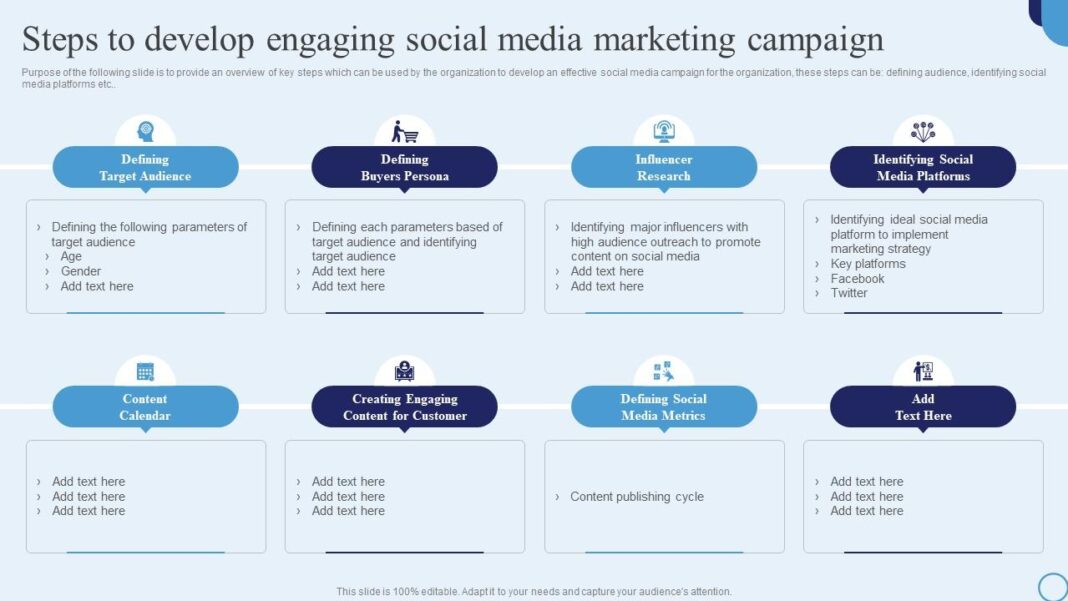[ad_1]
Key Steps in Developing a Social Media Strategy
For many companies, social networking has become a must-have tool. But, are these businesses utilizing social media to its greatest potential?
Creating a profile and publishing random material and content every now and then is no longer sufficient. It actually never was. Despite this, many companies do not appear to have a defined social media marketing plan that will help them succeed.
It may not appear to be a major problem at first, but failing to have a clear social media plan and a well-defined process might result in your social media marketing efforts not having the results you want.
However, if you devote enough time to doing things correctly, you may quickly establish and fulfill your objectives. Or better yet, you could do what most companies do and invest in a social media agency in London to help run and manage your platforms.
5 Key Steps in Developing a Social Media Strategy
1. Set Goals
The first thing you need to do when creating a social media strategy is to set some clearly defined SMART goals.
- Specific
- Measurable
- Attainable
- Relevant
- Time-bound
Your objectives will be unique to your company and will complement your overall objectives. However, some standard categories of social media goals to consider are:
Increasing your brand’s awareness: Social media is an excellent tool for building a brand voice, raising awareness about the issues you support, and promoting your brand’s morals and values.
Increasing the size of your audience: The size of your audience and the rate at which it grows are typically determining factors in social media success. The larger your audience, the greater your chances of generating leads, sales, and a loyal customer base.
Boosting community engagement: While the quantity of your audience is crucial for influencers, the proportion of people who visit your social media page and like, comment on, or share it is much more significant. Especially with the social media algorithms.
Driving traffic to your website: While having many engaged followers is fantastic, social media outlets should ultimately be used to direct visitors to your website to increase sales.
Increasing the number of leads and sales: If you want your social media strategy to be successful, you’ll need to see an increase in leads and sales as a direct result of it.
2. Define Your Audience
One of the most common blunders made by businesses on social media is assuming that all of their followers are beneficial to them. It’s pointless to have a large number of followers if they don’t result in conversions.
First, analyze who your content resonates with the most and determine whether this group fits the target demographic for your company – qualified leads will quickly convert your audience to consumers.
To get greater insight into your audience, familiarise yourself with up-to-date surveys and data. Create a few personalities that reflect your ideal customer. Knowing your typical follower’s profile will help you tailor your social media campaigns to meet their needs.
3. Create High-Quality Engaging Content
When it comes to creating content, the purpose is everything. There’s no space for random posts here and there, especially if they don’t resonate with your audience.
Your content should fall into one of these four categories:
Inspirational: the content should tug on the heartstrings or intrigue your audience to learn more about your brand. Highlight your brand’s morals, values, and charitable achievements.
Educational: Show your audience the ‘why’ behind your brand and product. Why are you better than the competition? Why is your product something they need?
Promotion: Highlight the offers and discounts your company is running with straight-to-the-point content and clear CTAs.
Entertainment: Post content that is fun and relatable to your target audience. From trending memes and quotes to engaging polls about the latest social debates.
4. Posting strategy
While you could post all of your social media content manually, this could be time-consuming and may not yield the greatest results. The majority of social media platforms now use some type of algorithm to filter the information they provide to users.
Meaning if you post at a time when your target audience isn’t online, your material may go unnoticed.
You’ll want to utilize one of the world’s many social scheduling tools to help you plan and pre-schedule your posts. The tools often show you the optimal time to post based on when your audience is most engaged on each platform.
5. Utilise Video Content
Right now, videos are proving to be the top-performing content across the social media board. People want to be visually and audibly engaged when scrolling through their feeds.
The success of TikTok has forced other platforms like Instagram and YouTube to create their own version of concise video content. Instagram has reels, and YouTube has Shorts.
With all that being said, right now, video content is king. The social media algorithms are now pushing video content to the top of everyone’s feeds over single images and carousels.
So, a successful social media strategy in this day and age should definitely be video-heavy.
Conclusion
Social media is a fast-paced environment. New platforms show up all the time, while others undergo regular shifts with new features popping up on a weekly basis.
As a result, your social media marketing strategy should be a live document that you revisit and tweak as and when.
To keep on track, refer to it frequently, but don’t be hesitant to make adjustments to better reflect new objectives, tools, plans, or trends.









